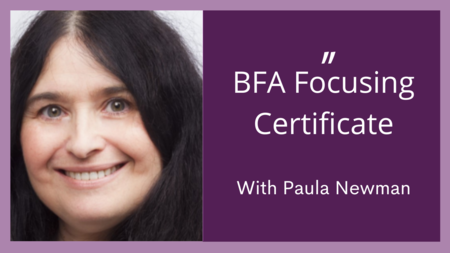Counselling Issues
I hope you will find my blogs about counselling issues interesting and helpful.
They are based upon my personal and professional experiences.
Couples Counselling and the power of listening
When somebody who you are close to expresses views that clash with your own, and each of you understands the same situation in a completely different way, listening calmly can be incredibly difficult. This is especially true when you feel they have misunderstood your good intentions and you are wounded by their words.
A key benefit of couples counselling is that each person can share their own perspective in a safe and empathic space. Interactions are facilitated in a sensitive and respectful manner.
When to start couples counselling
Couples counselling can be beneficial in a wide variety of relationships, including married and unmarried partners, siblings, friends, and parent and child.
Some couples turn to counselling when the situation has become unbearable, while others prefer to work through their differences at an earlier stage.
Experiencing long term problems in a significant relationship can feel overwhelming, disheartening, worrying and stuck. Your sense of security and stability may be shaken, sometimes causing mental stress and physical symptoms. These side effects can add additional strain to a fragile relationship.
Often the greatest benefit of starting at an earlier stage is the emotional relief that comes from speaking openly in an empathic and accepting atmosphere. Another advantage is the hope and self-empowerment that comes from taking a definite step towards improving your situation.
Sometimes one person is eager to start couples counselling while the other is reluctant. As your counsellor I want to hear from both of you, as there might be a concern that can be resolved. At the same time, I find that counselling is most effective when both people are ready and committed to working with the issues. If a client is unhappy about engaging, we explore this during the session, including whether or not to continue.
Causes of tension and conflict within relationships
Each of us brings our unique history, personality, hopes, desires, culture and ways of coping to our relationships. Difficulties can arise when people have differing opinions, needs and wishes and when painful areas such as a bereavement are not attended to. Daily pressures, family members, and life events can also have an impact.
People tend to seek counselling when one or both members of the couple are unfaithful, and in situations where someone feels betrayed. Trust issues can cause considerable distress.
Conflict can also emerge when one person needs more physical or emotional connection than the other, or when people simply drift apart. A counsellor can support you both as you reflect upon your current relationship.
There might be conflicts relating to financial matters, parenting, and taking care of older family members. The use of drugs and alcohol can cause major problems or exacerbate other difficulties. Often there are underlying frustrations and issues that need our attention.
The power of listening
My role as your counsellor includes listening carefully, respectfully and sensitively to each person. I want to fully comprehend your point of view and gain a deep sense of what you are feeling. I am interested in how you interact with each other, the areas that trigger one or both of you and how conflict plays out.
When I share my understandings of one person's perspective, the other has an opportunity to hear them too. This may allow you to feel some empathy or recognise a different viewpoint.
Being heard and acknowledged is often a relief. You can listen to your own feelings, gaining a deeper sense of your anger, frustration, anxiety, guilt, grief, and love. This may bring fresh insights into how you are affected and how you react.
For many, listening to the other person without commenting is incredibly difficult. You might have a very different perspective, feel misrepresented, or judged unfairly. I hope to communicate my awareness of how hard this is, whilst still holding the space for each person to speak and each person to listen.
As each member of the couple becomes more able to listen, it becomes easier to see both points of view. Discussing differences of opinion and working together with life issues becomes easier.
Couples counselling can help you to identify and address the causes of your difficulties and to understand each other's feelings and perspectives. You can also improve upon how you communicate your views and emotions with each other. As new ways forward emerge you might want to make some changes which can also be explored and discussed.
Endings
As couples move towards ending their counselling sessions, many prepare to continue their relationship in a more peaceful, companionable and loving way. A few decide to see less of each other or to end their relationship. Improved listening skills can help you manage this process more respectfully, amicably and kindly.
Contact Paula
If you are considering couples counselling, please reach out for a confidential conversation. I offer in-person counselling in Harrow / Stanmore and online appointments if you prefer.
Loneliness Reflections
By its very nature loneliness is a solitary experience, our feelings and emotions are unique to each of us. At the same time loneliness is a common feeling. Many of us can relate to the sadness, emptiness, and sense of invisibility. As the psychologist Carl Rogers writes (1967) 'What is most personal is most universal'
I reflect upon the various types of loneliness
Relational Loneliness
Missing a particular person and just wanting to be with them again.
Spending too much time alone, missing the interactions and the company of others.
Having plenty of acquaintances and finding that this does not satisfy the need for deep bonds with people who we love and trust.
Feeling lonely in our community, lacking a sense of belonging and feeling like an outsider. Perhaps our views and beliefs have changed and are now at odds with this particular community, or maybe we are not very confident socially and find our self on the outskirts.
Loneliness related to depression, anxiety and trauma
The loneliness of not having anyone around you who truly understands.
Describing personal experiences of depression, anxiety and trauma to people who have not been through something similar can be extremely difficult. This can be due to symptoms such as exhaustion as well as the challenge of finding adequate words to capture the feelings, emotions and moods.
Kay Redfield Jamison writes about her experience of social loneliness and isolation when depressed:
People cannot abide being around you when you are depressed. They might think that they ought to, and they might even try, but you know and they know that you are tedious beyond belief: you are irritable and paranoid and humorless and lifeless and critical and demanding and no reassurance is ever enough.
Inner loneliness
Inner loneliness is about the relationship that we have with our self.
Depersonalization is a form of dissociation. It is a feeling of being detached from one's self. There can be a sense of going through the motions of day to day living without being emotionally present. This has been described to me as being like a zombie, and being a body without a soul.
Without an inner connection to one's self it is also difficult to relate emotionally with other people.
Feeling lonely is very painful and can affect our physical and emotional health. Some people blame themself and this can exacerbate their suffering.
Everyone else might seem to be living an exciting and sociable life, surrounded by family and friends. The 'evidence' is posted on social media with photos of people having fun together. Those of us who are feeling lonely and isolated may conclude that there is something 'wrong' or 'different' about us. Perhaps we focus upon our looks, personality, a disability or a general sense of 'wrongness'. This can be especially painful in situations where we would like and expect to be with others. Some people feel embarrassed and ashamed their loneliness and withdraw further.
As your counsellor I am beside you in an emotional sense.
Sharing your feelings of loneliness with somebody who is genuinely attentive, respectful and accepting can bring some relief. It is my intention to understand as closely as I can. I hope that you will feel free to explore your self and your experiences. Often feelings of loneliness are reduced.
As you share your perspective and feel understood and accepted, the healing connection between client and counsellor can grow, and your inner connection can deepen.
Loneliness can be explored and new understandings and insights may emerge. You might begin to understand loneliness in a fresh way.
Self-care
When we are in an emotionally low place taking some sort of action may be extremely difficult. Self-care can be a gentle start. the decision to consider our needs and then do something for our own benefit indicates that we are important and deserving of nurturing attention. This can increase our confidence and sense of worth.
If we are able to involve ourselves in activities that boost our physical and emotional health, we are likely to have more energy and enthusiasm for social engagement.
~ Carl Rogers a Way of Being
~Kay Redfield Jamison An Unquiet Mind: A Memoir of Moods and Madness
.
Joining voluntary projects can be a way of connecting with others and alleviating both our and their loneliness. We can all be aware of the people around us. Noticing and including someone who looks left out in a social situation and offering our companionship where we can.
Understanding Bullying
My understandings of bullying are based upon therapeutic work with clients and personal life experience. Victims of bullying can suffer lasting psychological harm.
At times of severe distress some children and adults have attempted or committed suicide. Family members are also victims as they witness the effects of bullying upon their loved one.
Sometimes bullying is hidden and sometimes it goes on in plain sight. I am interested in what makes bullying possible. Who becomes a victim and how do some people get away with using physical and emotional harassment. As a counsellor I am concerned with how to best support my clients.
The victims
In my experience, people are prone to being bullied in situations where they stand out as different from the majority. There might be physical, cultural, gender and ability differences, or something more subtle, a look of vulnerability that is recognised and exploited
Bullying can also be directed towards someone who appears to be a threat either to an individual or to a group. The power of the group over an individual can be enormous and impossible to withstand.
I use the term victim to describe someone who is a target of bullying since they are the injured party. This is with the understanding that people who harm others might also be a victim in their own personal circumstances.
There is the view that by seeing themself as a victim the bullied person is accepting this as their position rather than finding their own power and resilience. However blaming the victim is an important source of the bully’s power and I do not want to add to this by inferring that it is the sufferer’s responsibility to stand strong. There might be circumstances where the victim is able to bring about some change. However, in many situations this expectation is unrealistic and might increase their distress.
Bullies have power
Perhaps the perpetrator sees something in the victim that triggers their own difficult feelings, or maybe they hope to gain group status.The bully’s own insecurity and vulnerability might be at the heart of their behaviour.
Whatever the perpetrator's reasons and underlying issues, within this situation they have enough power to victimize others. People bully because they can.
The effects of being bullied can allow perpetrators to continue. Victims might be too afraid and too ashamed to seek help. Sometimes a bully denies or plays down their behaviour. This can leave their victims feeling uncertain and mistrusting of their own experiencing and fearful that they will not be taken seriously if they seek help.
Shame
Bullying often includes humiliation of some sort. There might be name calling, labelling, showing embarrassing pictures online, laughing at someone's expense and more. Even when the situation has changed and the bullying has stopped, victims may continue to suffer its harmful effects.
Whilst the bullying continues, victims may feel too embarrassed and too ashamed to expose themselves further by seeking help. This keeps them in an isolated position, making it possible for the torment to carry on without outside intervention.
Blaming the victim
Blaming the victim might be a deliberate strategy, used to justify the bully’s actions to themself and to any witnesses, even with very flimsy reasoning.
Thus a group of school girls might corner their victim at break time, drag her to the cloak room and shove her head in the toilet because ‘We don’t like the way she looks at us/ there’s something about her/ she makes us do it’.
Blaming masks the actual situation and can create feelings of disgust and mistrust towards the victim. Onlookers may be drawn into the bullying. Perhaps blaming also soothes the consciences of those who turn away.
Self protection and fears of being bullied oneself can also influence people's reactions. Onlookers might recognise personal characteristics similar to those of the person being bullied. By joining against that person they might hope to divert attention away from themself.
Counselling
If it comes to light that a child who is aged 16 or under is being bullied, I consider it ethical and in the child's best interest to ensure that a parent or a trustworthy adult is aware of the situation. Any discussions with parents would be with the child's knowledge. Hopefully they would be present and included in discussions and decision making.
If a young person or adult is currently being bullied they might choose to explore their situation, and how to deal with it during their counselling sessions.
A genuine and trustworthy counselling relationship creates a safe space for people to talk about their experiences and to express their feelings. This can bring some relief and healing.
Bullying can crush a person’s confidence and sense of self. Being humiliated, physically hurt and manoeuvred into compromising situations against one’s will is extremely disempowering. There are people who believe that somehow they have brought this situation upon themselves. These are all areas that we can work with together.
Working therapeutically with the emotional effects of bullying includes trusting the client’s experiences and understandings. It is important to hear and to accept how things are from their point of view. Exploring what has or is currently happening and its impact can bring some clarity. Often fresh understandings emerge. There can be new insights and recognition of personal qualities and srengths.
Exposing Scapegoating
At Secondary School I noticed that one boy was getting into more trouble than anyone else. He protested to teachers when the other boys blamed him for various incidents. Sometimes he became angry and his behaviour was used to against him. If there was a problem in class this boy would always be implicated, either by teachers or pupils.
A scapegoat is forced to shoulder the blame. Attention is drawn away from underlying causes, tensions and conflicts which become less visible. Instead the scapegoat’s professed shortcomings are highlighted. Any disquiet, anxiety, fear, anger, and so on that people are experiencing due to the initial situation is attributed to the scapegoat. The focus is upon their alleged guilt, whilst the reality of their predicament is largely unseen. Thus, both the scapegoat’s painful position and the original issues are unacknowledged.
This might happen in a family where there is a delicate, unspoken issue, for example the husband’s long-term unfaithfulness to his wife. One person, perhaps their teenaged daughter experiences the uncomfortable atmosphere. She finds the silence intolerable and eventually she speaks out.
Both parents are disturbed, they start picking on their daughter for small things, she is told off and criticised, bearing the brunt of their underlying anger towards each other. The teenager reacts with her own anger, she becomes uncooperative and is viewed as the family problem. The ‘problematic’ teenager is visible, whilst the husband’s unfaithfulness and what might lie behind his behaviour has dropped further out of sight.
Scapegoating tends to be initiated by one or more people with authority. This might be a person with status in a peer group, parents, teachers, tutors, bosses, and community leaders. Amongst those who witness scapegoating and those who are drawn into it there may be some recognition of what is happening. There can be a great deal of fear. Some people withdraw from the situation whilst others join against the scapegoat.
It is rare and it takes great courage to stand beside a person who is being scapegoated within a group. Nobody wants to be the next target.
The trap
Imagine being unfairly accused of something and unable to convince others of your innocence. Anything that you try to say or do is used against you. The usual rules of justice and compassion no longer apply. Reasoning, arguing, shouting, fighting, panicking, having an anxiety attack and withdrawing are all twisted to prove and add to the original accusations.
Scapegoating is a form of bullying and can include criticising character and competency, shaming, mocking, excluding and ostracising. This wears away at a person’s confidence and self-esteem, undermining their sense of self. In this very vulnerable state it is extremely difficult to put protective boundaries in place.
Victims of scapegoating may come to believe some of the accusations and criticisms against them. Perhaps they feel that there is some shame in their predicament. Shame may prevent them from telling other people about their current situation and asking for help.
Escaping the trap
A person who is being scapegoated might think there is something that they can do or say to change attitudes against them. In my opinion this is unlikely since a scapegoat’s enforced role maintains and increases the power of those who already have status and authority. Others in the group tend to be obliging as they are afraid of becoming the next victim.
It seems to me that often there is only one way of changing the situation, and that is to leave. This might happen as a matter of course, for example the boy in my year group left at the end of his secondary school education. Sometimes perpetrators recognise that the situation has gone too far and that there may be some repercussions for themselves. A way out of this is to find, or to create reasons for ousting their scapegoat from the group.
Sometimes the abuse becomes too much to bear and a person is unable to continue in this situation. Bullying can result in psychological damage, suicidal feelings and the taking of one’s own life.
If possible, making the decision to leave oneself can be empowering. Sadly, this might mean giving-up something precious such as being part of a family unit, a job or an important course of study.
Speaking with trustworthy people who know you well can be illuminating. They can remind you of your strengths, and point out discrepancies in other people’s perceptions of your character and behaviour.
Counselling is an opportunity to explore your experience in depth. Going over the whole situation, perhaps several times, can bring fresh insights that reveal the reality of your experience, whether a single event or a long term situation.
Dyspraxia, a Hidden Disability
Whilst the exact causes of dyspraxia are not yet fully understood, it is thought that parts of the motor cortex in the brain are immature and consequently messages to the body are not sent out in an efficient manner. Developmental Dyspraxia is present from birth.
Adults and children with Dyspraxia struggle with everyday tasks that others manage easily. Physical movement, behaviour, social interactions and emotions can all be affected. Some people feel anxious and depressed as a result of their difficulties.
Neurodivergence referes to people with neurological differences that affect literacy, numeracy, memory, organisation, concentration, behaviour, perception, listening, communication and social skills. This includes those with Autism, ADHD, Tourette Syndrome, Dyslexia, Dyscalculia, and Dyspraxia.
Dyspraxia is not very visible
You would not know that someone is Dyspraxic by looking at them. Dyspraxic people may choose to hide their differences. Instead of letting others see that ‘simple tasks’ such as doing up shoe laces, reading a map and following directions are problematic they might wear slip on shoes and avoid visiting places which they cannot find.
Some people hide their condition by steering clear of compromising situations such as discussions, interviews and public speaking where they are likely to suffer embarrassment due to poor short term memory and difficulty expressing their thoughts coherently.
Certain symptoms can become less apparent since people learn to adapt over time. They may develop strategies such as using written directions rather than following a map and concentrating very carefully so as to avoid tripping over.
Dyspraxia may not be easily identified since the symptoms and their severity can vary from person to person. For example some but not all dyspraxics have verbal dyspraxia which affects speach.
Furthermore, neurodiverse differences can occur together. For example a person might be autistic and dyspraxic. Since there are some common symptoms such as awkwardness in social situations, dyspraxia might not be identified.
With Dyspraxia there is an uneven spread of abilities.
A pupil's poor grasp of geometry for example may not be seen as significant because the same pupil is clearly very able when it comes to essay writing.
At the same time, many symptoms of Dyspraxia are noticeable and not very easy to hide
In the past Dyspraxia was called 'clumsy child syndrome' because it is evident that children with the condition are prone to tripping over and bumping into people and objects. This is due to poor spatial awareness, poor coordination and weak balance. Dyspraxia continues into adulthood although over time a number of people become better at managing their clumsiness.
For some Dyspraxic people running and walking looks awkward due to poor integration of the right and left sides of the body. In my view it is probable that people do notice these traits because they are difficult to miss.
Social awkwardness can also be visible. This can include misunderstanding what is being expressed due to literal thinking. With literal thinking it is also difficult to get jokes and therefore to react appropriately. People with Dyspraxia might mistakenly interrupt others in a conversation because it is hard to judge when someone has finished speaking, this is particularly challenging in groups.
Concluding thoughts
In general, some of us are more accident prone than others, not everyone has a good sense of direction, or clear handwriting. Occasionally we might fumble with small motor movements such as inserting a key in the correct position and then manipulating it to unlock a door. In order for Dyspraxia to be recognised as a disability it is important to understand that it is distinguished by the level of difficulty and the number of areas affected. This is not always clearly apparrent.
It seems to me that whilst Dyspraxia is to some extent hidden, there are also many signs of its existence. I wonder whether it is sometimes missed because we might see an aspect of Dyspraxia, say a person finding it impossible to park their car between the two lines in a designated space, without realising that this is the symptom of a disability.
Dyspraxia is within our sight but we do not always know what we are looking at.
Dyspraxia and Person-Centred Counselling
'As a child I frequently bumped into things and tripped over. The other children laughed so I pretended that I was being clumsy on purpose'
Dyspraxia is a neurological condition. Whilst the exact causes of dyspraxia are not yet fully understood, it is thought that parts of the motor cortex in the brain are immature and consequently messages to the body are not sent out in an efficient manner. Developmental dyspraxia is present from birth.
People with dyspraxia experience a combination of the challenges below with varying degrees of severity:
Clumsiness affecting gross motor skills such as walking, running and jumping, and fine motor skills such as writing, using tools, and moving one’s tongue to form words.
Judging the speed and distance of traffic.
Managing sports that require coordination, balance and judging distance.
A poor sense of direction which can limit independence especially when it is also hard to understand travel directions and to read maps.
Forming and articulating ideas. Whilst speaking key words may be forgotten.
Difficulty organising a room, diary, finances, study and thoughts.
Struggling to recognise familiar faces and voices.
Literal thinking and not getting the joke.
Difficulty controlling emotions panicking and becoming overwhelmed. Afterwards there might be feelings of embarrassment and shame.
Being accused of laziness, not trying, and being unintelligent.
Experiencing one’s self as different and having difficulties fitting in. This can lead to sadness, depression, despair, frustration and anger, and can undermine self-confidence and self-esteem.
Counselling involves working with the emotional effects of dyspraxia
Person-centred counsellors believe that we all have a natural tendency to develop our potential and to grow psychologically. Clients are viewed as experts based upon the view that each of us knows ourselves and our needs better than anyone else can. Therapists are interested in how individuals understand and experience themselves and their issues.
This attitude is empowering for clients and can be very helpful for those who experience frequent difficulties and failures. Person-centred counselling helps people to be self-accepting and to have confidence in their personal views, thoughts and perceptions.
Counselling provides a relationship which facilitates psychological growth, healing and living life in a way is satisfying to the individual. The relationship is based upon Carl Rogers’ six conditions for psychological growth. The core conditions are:
Empathy
A dyspraxic person may feel different, isolated, misunderstood and lonely. Person-centred counsellors seek to have an in-depth understanding of what is like to be in their client’s shoes. There is an intention to experience their client’s reality as if it were their own, for example, all the feelings that a client had when he could not unlock his own front door. The counsellor is a companion, accompanying the client in his or her explorations. Empathic understanding and companionship may reduce the isolating effects of dyspraxia.
Unconditional Positive Regard
The therapist has an unconditional accepting, respectful and warm attitude towards the client. A person with dyspraxia may find it difficult to accept themselves, their difficulties and their condition. They might have endured ridicule, bullying and other people’s judgments. Being genuinely accepted and respected challenges other people's critical messages . Clients can explore their own attitudes and self judgments.
Congruence, also known as genuinness
Person-centred counsellors strive to be aware of what they are experiencing whilst they are with clients. This helps the counsellor to be honest and openly themself in the relationahip and to offer their sincere understandings, acceptance and warmth.
Openness, sincerity and genuinness create a trustworthy relationship and a safe environment for clients to explore and express their thoughts and emotions.
Dissociative Identity Disorder (DID)
Dissociative Identity Disorder (DID) is a mental health issue caused by severe trauma in childhood, often physical, sexual and emotional.
Most of us dissociate from time to time. We may become lost in thought or gaze dreamily into space. Dissociation is an altered state of consciousness that separates us from our feelings. In life threatening circumstances such as fire dissociating can help us to save lives by acting automatically without becoming overwhelmed by fear.
Children who are experiencing intense trauma may protect themselves from overwhelming emotional and physical pain by dissociating. Perhaps by imagining that they are somewhere else. They might lose touch with reality to the extent that later they do not remember the abuse. Children who are repeatedly abused may eventually dissociate automatically.
Alternate Personalities
Under extreme stress from abusers, with no power to escape and no one to save or soothe them, alternative identities known as alters may emerge to help children cope. This is the best option in the situation.
Alters have their own functions, one alter may hold the memories of a traumatic incident keeping them out of conscious awareness. Another alter might take over to manage the school day. When there is a particular trigger an appropriate ‘alter’ comes forward to deal with it. For example a strong boy alter helping with a perceived threat.
Each alter is an element of the same person known as the host. The host may not be aware of having alters although alters might know about each other.
Living with Dissociative Identity Disorder (DID)
Experiences of Dissociative Identity Disorder vary. If you have DID some of the following may be familiar:
Time loss and blackouts
You would not choose to wear some of the clothes in your wardrobe – they belong to ‘someone else’
Some things, such as a particular colour terrifies you although you do not know why
You have flashbacks and nightmares
You experience depression, mood swings, anxiety, panic attacks, difficulties with eating and food, self harm, drug and alcohol abuse
Sometimes you are suicidal
You do not like to be touched / have problems with sexual intercourse.
You have hallucinations, headaches and physical symptoms that seem to have no cause.
You try to appear the same as everyone else and often achieve this when necessary e.g. whilst at work.
Your symptoms have been misdiagnosed more than once.
Counselling for Dissociative Identity Disorder
A consistent and supportive therapy relationship with clear boundaries can be healing over time. Therapy may continue over several years as the sufferer discovers memories that have been buried away.
Clients can work with emotions such as anger, fear and shame and the feelings of powerlessness and loss of control that childhood abuse can cause. Releasing their emotions can reduce the client’s stress and might help with problems such as headaches, insomnia and panic.
During counselling sessions people with Dissociative Identity Disorder can also work with the social and practical effects of living with DID, for example maintaining friendships and holding down a job.
As alters become known to the host, some clients work towards integrating each alter within themselves to function as a single person. Others prefer to live their lives more harmoniously whilst continuing to have alters. Integration is generally a long process. There can be feelings of loss and loneliness in losing alters who have their own personalities and who have been companions to the host for most of their life.
Childhood abuse is extremely disempowering, children have no say and no power to change their situation. In contrast I view counselling as an opportunity for people to develop self-trust, enabling them to make their own decisions.









